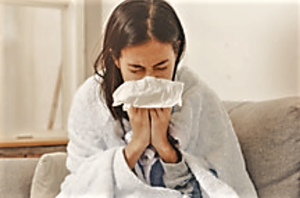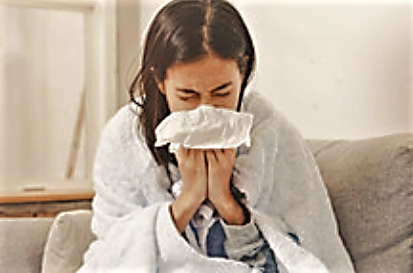
Today is Wednesday, the 11th of March, 2020. On Monday the stock market had its worst day since 2008. Global oil prices have gone sideways. The worldwide panic is officially upon us, and rightfully so. The root cause of the panic – a virus named SARS-CoV-2, and the respiratory disease it causes, coronavirus disease 2019 or COVID-19 for short. On January 30th of this year, the World Health Organization’s International Health Regulations Emergency Committee officially declared the outbreak a PHEIC (public health emergency of international concern). One day later, a PEH (public health emergency) was declared in the U.S. by Alex Azar, the Secretary of Health and Human Services.
Nine days ago, on March 2nd, Johns Hopkins University released numerical data showing that there were 101 confirmed cases of COVID-19 in the U.S. including 6 fatalities. As of researching numbers to write this article yesterday, the number of confirmed cases in America has climbed to a staggering 729, including 25 new confirmed cases reported at that point in the day and it was only 10:30 a.m. That’s a 722% increase in 7½ days. If that rate of increase were to continue for the next five weeks, the total number of cases of coronavirus would be an impossible 10.325 billion, exceeding the total population of the world by 2.5 billion people.
Let’s look instead at the big picture. Here are the numbers as of 8:45 a.m. on March 11, 2020. Current number of cases worldwide = 121,246. That includes 4,378 deaths, 66,908 patients who recovered, and 49,960 currently infected patients (44,210 with mild symptoms and 5,750 (12%) who are in serious or critical condition). Out of those 121,246 global cases, almost 2% of them (2,322) have been reported for the first time today (between 12 a.m. and 8:45 a.m.). Last week, Professor Marc Lipsitch, an epidemiologist from Harvard University School of Public Health and the head of the Harvard Center for Communicable Disease Dynamics said publicly that as much as 40% – 70% of the world’s population could become infected with the coronavirus, and that global impact is almost inevitable.
Please understand that we don’t write this article to scare you, but rather to make you aware of the threat, and help you get your families and yourselves prepared for battle. There are proactive things that each of us need to be doing and need to be making sure that our children are doing in order to mitigate the impact this virus has on our families, our communities, and our nation. Let’s look at what the CDC is saying.
Taken from the Centers for Disease Control’s website today, “More cases of COVID-19 are likely to be identified in the United States in the coming days, including more instances of community spread. It’s likely that at some point, widespread transmission of COVID-19 in the United States will occur. Widespread transmission of COVID-19 would translate into large numbers of people needing medical care at the same time. Schools, childcare centers, and workplaces may experience more absenteeism. Mass gatherings may be sparsely attended or postponed.
Public health and healthcare systems may become overloaded, with elevated rates of hospitalizations and deaths. Other critical infrastructure, such as law enforcement, emergency medical services, and sectors of the transportation industry may also be affected. Healthcare providers and hospitals may be overwhelmed. At this time, there is no vaccine to protect against COVID-19 and no medications approved to treat it. Nonpharmaceutical interventions would be the most important response strategy.”
What are nonpharmaceutical interventions? The common sense things include:
- Stay at home when you’re sick
- Cover your coughs and sneezes with a tissue
- Wash your hands often with soap and hot water for at least 30 seconds (sing the happy birthday song in your head twice from start to finish and that will be the correct amount of time)
- Keep more distance between yourself and others than you usually would when interacting socially at work, school, shopping or events
- Clean frequently touched surfaces like doorknobs, handrails, and elevator buttons
Since early last week, we’ve had our researchers at Harvest Wholesalers, LLC and FarmersMarketWellness.com looking into additional things people can do to help in this fight and searching out additional information we can provide for you. Here’s what they’ve uncovered.
The symptoms are fever, fatigue, cough, and shortness of breath – not unlike the flu. From a progression standpoint, it seems to start with a fever and fatigue followed by a dry cough. Within a week, it can result in shortness of breath requiring hospitalization for 20% of patients. Also, less than 5% of patients report sneezing, stuffy nose, runny nose, or sore throat, so if you’re feeling any of those symptoms as part of your sickness, chances are you have a cold or the flu. Roughly 81% of cases are mild and people can fully recover at home, 14% are severe, and about 5% are critical.
High risk individuals include anybody who suffers from respiratory disease, hypertension, cardiovascular disease, MCAST, and diabetes. Add that to the usual groups that are normally considered to be high risk with regard to getting sick such as young children, the elderly, people with chronic medical conditions, and people with compromised immune systems. In mild cases the illness lasts for about two weeks. People who have severe cases can see it last four to six weeks. For critical cases, the time from diagnosis to death is typically six to eight weeks. The incubation period is believed to be between two and fourteen days, but some outliers have shown as much as a twenty-five to twenty-seven day incubation period.
By the time patients have symptoms like fever or cough and seek treatment from the local hospital, those suffering severe cases tend to have fibrosis (scar tissue damage) in roughly 50% of their lung tissue. At that point it’s too late for most of those patients. In preventing death among the sickest of patients, it seems that early detection is key, but how do you detect it if you’re not even displaying symptoms yet? The best way is as follows:
Perform this simple, self-test two or three times daily. Take a deep breath in. Hold that breath for at least ten seconds, then exhale. If you’re able to do that successfully, without discomfort or coughing, stuffiness, or tightness in your chest, your lungs are not experiencing fibrosis which is a relatively good indication that you’re not infected. Now, let’s keep you that way.
We all agree that prevention is better than cure. In addition to the common sense items listed above, there are a couple of things you can do to help your chances of staying healthy. We recommend doing things that are known to strengthen your immune system. Eating a well-balanced diet, walking in the sun, reducing overall stress, and getting a full eight hours of sleep nightly will all improve the body’s immune response to infection. When it comes to sleep, it’s important to remember that the body has a natural rhythm, and typically disposes of most toxins between the hours of 11 p.m. and 3 a.m. during a particular stage of sleep. Please get a proper amount of rest.
Also consider starting a regimen of vitamins and supplements that are known to help boost the efficacy of our immune systems and adding to your diet foods that are known to help as well. Drinking celery juice for instance is not only good for staving off infection, but specifically good for keeping lung infections at bay. Vitamins A, B6, C, D, and E are all proven to help the body fight off illness. You may want to consider taking Quercetin, especially those who have been diagnosed with MCAST. Additionally, supplements like Zinc, Andrographis, Echinacea, Astragalus, and Elderberry are all very beneficial to the immune system as well. While we do sell some of these products on FarmersMarketWellness.com, our goal here is not to generate sales. We don’t care where you source these products, we just want you to take them if you are immune deficient, or are in any high-risk group.
The last nugget of advice comes from South Korea where doctors are telling everybody to take a few sips of water every fifteen minutes or so throughout the day. Most patients contract the virus through the mouth. When you sip water, even if you had come into contact with the virus, you wash the virus into your digestive system where it is destroyed instead of having it replicate in the mouth to the point where it is ultimately inhaled into the lungs where it flourishes. We add our own bit of wisdom to this and suggest that gargling with warm salt water, which is also a good way of disinfecting the mouth, should be done a few times daily but at least once prior to going to bed each night.
We know there are a lot of people in America today that have the opinion that the coverage of the virus is blown out of proportion, and still have their heads in the sand. Please heed our advice. From the time we started researching numbers 21 hours ago to write this article until now, the number of confirmed cases in the U.S. has gone from 729 to 1,016. This threat is not to be taken lightly. Stay healthy, my friends.
